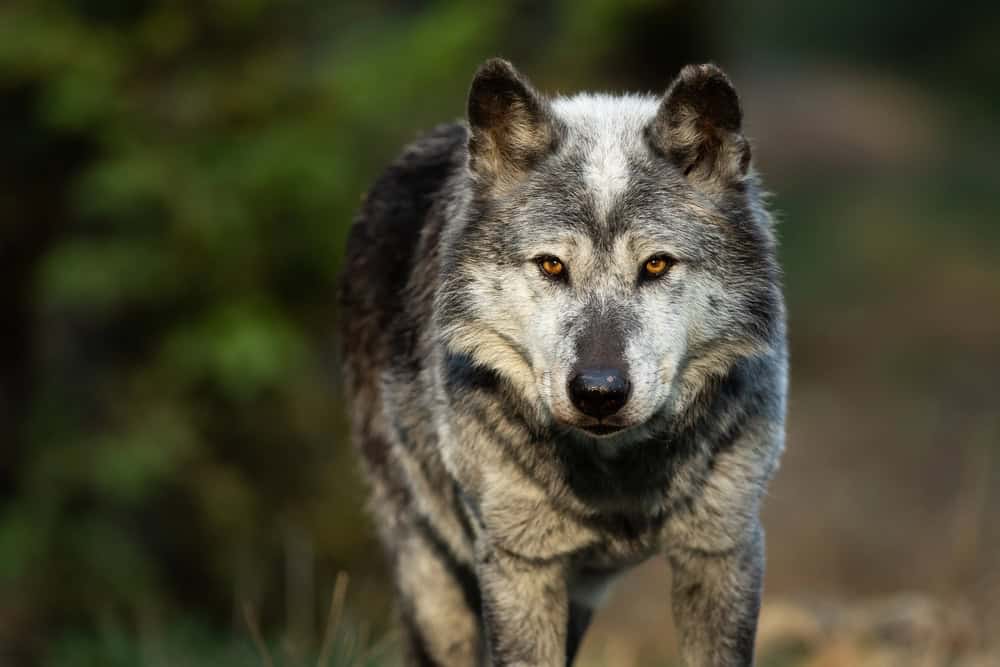Wolves have long been shrouded in mystery and misunderstanding, often cast as villains in the stories that have shaped human perceptions. However, recent scientific studies reveal the indispensable role these majestic creatures play in maintaining the health of forest ecosystems. In this article, we will explore the various ways wolves contribute to the vitality and sustainability of forests. As we delve into the fascinating world of wolves, prepare to discover a new appreciation for their hidden capacities and the crucial balance they help sustain in nature.
The Predatory Ripple Effect

Wolves, as apex predators, exert a significant influence on their ecosystems, known as trophic cascades. By preying on herbivores like deer and elk, wolves help regulate these populations, preventing overgrazing. This balance is critical in maintaining a healthy mix of plant species, which in turn supports diverse animal populations. The presence of wolves ensures that forests are not stripped bare, allowing for the regeneration of vegetation and the stabilization of ecosystems.
Forest Regeneration and Biodiversity

In areas where wolf populations have been reintroduced, studies have shown a resurgence of biodiversity. With herbivore populations in check, young saplings have a better chance to grow and mature, creating a more robust and varied forest structure. This increased plant diversity supports a wide range of animal species, from birds to insects, enhancing the overall health of the ecosystem.
Impact on Other Predators

Wolves also play a crucial role in regulating populations of other predators, such as coyotes. By suppressing coyote numbers, wolves indirectly allow smaller predators and prey species to thrive. This dynamic leads to a more balanced ecosystem, where no single species dominates to the detriment of others. The presence of wolves encourages a complex web of interdependent species, all contributing to the forest’s health.
Wolves and Their Prey

The relationship between wolves and their prey is more nuanced than simple predator-prey dynamics. Wolves tend to target weaker, older, or sick animals, which helps improve the overall health and genetic quality of the prey populations. This natural selection process leads to stronger, more resilient herbivore populations, which are better suited to adapt to environmental changes.
Effects on Soil and Water Quality

By maintaining balanced herbivore populations, wolves indirectly contribute to soil and water quality. Overgrazing by unchecked herbivores can lead to soil erosion and sedimentation of waterways. Wolves help prevent these consequences by keeping herbivore numbers manageable, promoting healthy vegetation cover that protects the soil and filters water, thus preserving the forest’s natural resources.
The Role of Wolves in Pest Control

Wolves also assist in controlling insect populations. By managing herbivore numbers, wolves ensure that plant species are not overbrowsed, which can make plants more susceptible to insect infestations. Healthy plant populations support natural pest control mechanisms, thereby reducing the incidence of outbreaks that can devastate forests.
Wolves as Keystone Species

The impact of wolves on their environment categorizes them as a keystone species—organisms that have a disproportionately large effect on their ecological community. The removal of wolves from an ecosystem can lead to drastic changes in vegetation and wildlife populations, demonstrating their essential role in keeping forests balanced and healthy.
The Human Factor

While the benefits of wolves to forest health are evident, their presence often conflicts with human interests, particularly agriculture and livestock farming. Education and coexistence strategies are crucial in reconciling these interests. By understanding the ecological importance of wolves, communities can develop methods to protect livestock without undermining the role of wolves in forest ecosystems.
Successful Reintroduction Programs

Programs that have successfully reintroduced wolves into their natural habitats, such as Yellowstone National Park, provide valuable insights into the impacts wolves have on ecosystem health. Observations from such programs underscore the importance of wolves in restoring ecological balance and highlight the potential for similar initiatives worldwide to rejuvenate degraded landscapes.
The Educational Component

Raising awareness about the ecological role of wolves is essential in shifting public perception. Education efforts can inspire a deeper understanding and appreciation of these animals and their vital environmental contributions. Through documentaries, wildlife tours, and school programs, people can learn to see wolves as protectors of nature rather than threats.
Scientific Advancements in Understanding

Advancements in technology and research methodologies continue to provide new insights into the role of wolves in forest ecosystems. By using tools like GPS tracking and remote sensing, scientists can study wolves’ movements and interactions with their environment in unprecedented detail, leading to more informed conservation strategies.
The Future of Wolves and Forest Ecosystems

The future of wolves in maintaining forest health depends heavily on conservation efforts, public education, and policy development that prioritizes ecological balance. As we continue to learn about these magnificent creatures, it becomes increasingly clear that wolves are indispensable architects of their habitats. By fostering a coexistence mindset, we can ensure that both wolves and humans thrive in a world enriched by healthy, vibrant forests.
In conclusion, wolves are far more than the sum of their tales. These intricate animals are vital to the health and sustainability of forest ecosystems, playing a complex and multi-faceted role in maintaining nature’s balance. Embracing the presence and importance of wolves can lead to healthier forests, thriving biodiversity, and ultimately, a richer natural world for future generations to enjoy.
- The Secret Role Wolves Play in Keeping Forests Healthy - August 13, 2025
- The Bird That Travels 15,000 Miles a Year Using the Stars for Navigation - August 13, 2025
- Do Ostriches Really Bury Their Heads in the Sand and Where That Myth Came From - August 13, 2025

